Read First: Key Considerations for a Successful Install
Prepare for Install
Find an Unobstructed Location
Review Important Hardware Details
Ingress Protection (IP) Rating
Sealing Cable Connections
Cable Details
Mount Starlink
Mount the Power Supply
Connect Starlink
Connect the Power
Connect the Network
Installing Multiple Starlinks
Connection Monitoring
Maintenance and Troubleshooting
Get Support
Additional Resources
Detailed guidelines for mobile Starlink Performance (Gen 2), formerly Flat High Performance, installations.
Get maritime installation services from Starlink Affiliate Installers, starting at 1450 USD. Fill out our pre-install survey and an Affiliate Installer will reach out.

Starlink App: Download the Starlink app first. The app will help you find an unobstructed install location, manage your account, test your connection, and browse the shop.
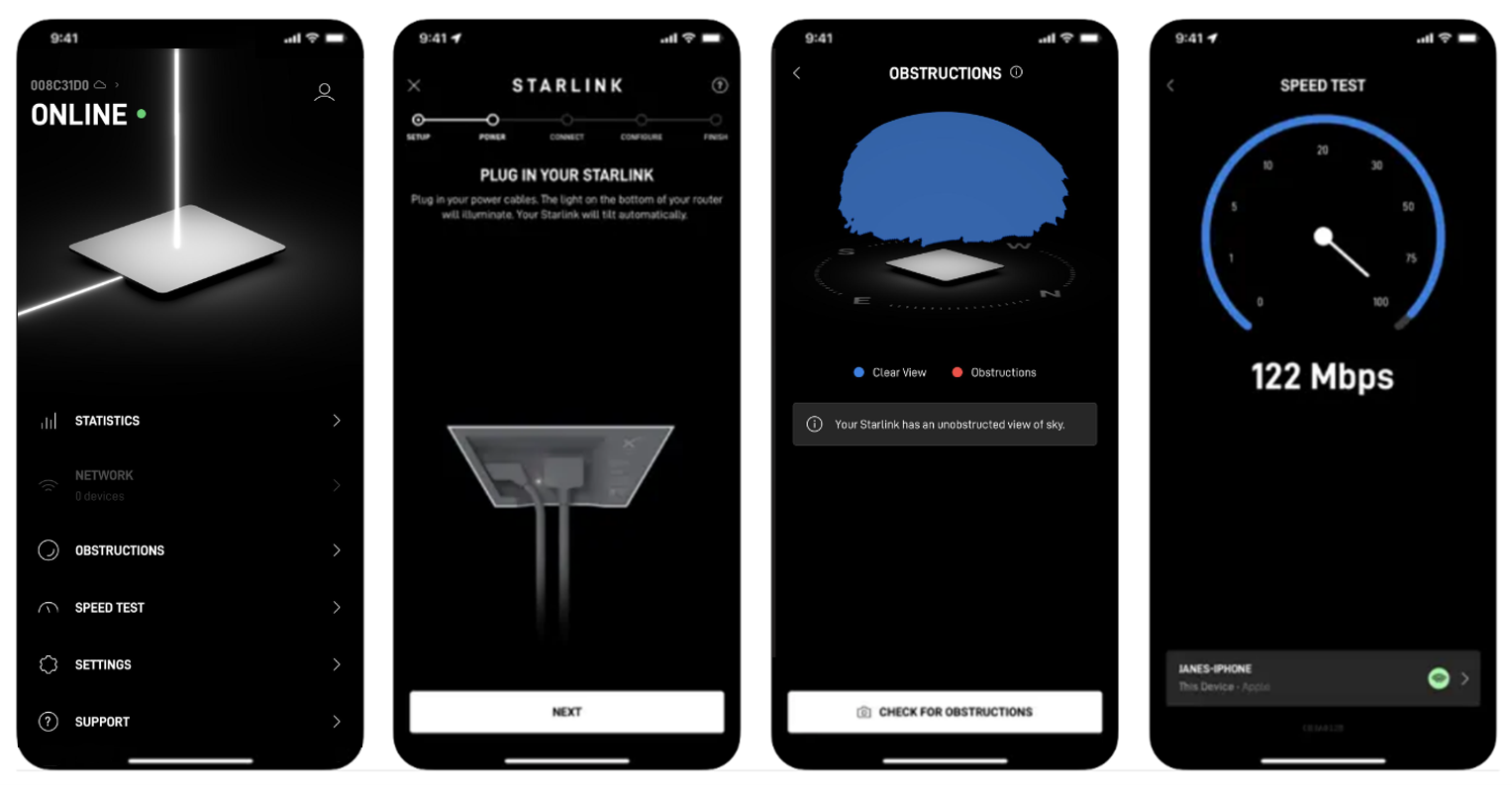

Starlink must be 100% unobstructed for best performance. Even small obstructions in the field of view will have a negative impact on the quality of the connection, including intermittent outages, dropped packets or sessions, and a reduction in overall average bandwidth capacity.
Each dish should have clear view of the sky from around 20° elevation (above the horizon), with a full 360° azimuth (rotation). If there are obstructions to the field of view, multiple dishes can be used, and load balanced with a 3rd party router. However, any dish with obstructions will result in lower than the rated performance (i.e. bandwidth throughput) from that dish. It is of utmost importance to install in a location with a clear view of the sky.
The wedge mount will tilt the dish such that the field of view is 12° at the lower side of the dish, and 28° at the upper side, and roughly 20° on the remaining two sides. If you are installing in an area with minor obstructions, it would be best to tilt the dish away from those obstructions.

Customers have been successful installing Starlink on masts, railings, elevated posts, and roofs, since the dishes are less likely to be obstructed and are better protected from salt spray.
If your Starlink will not be the tallest object in sight at the install location, be sure to use the Starlink app to ensure no obstructions such as masts, antennas, or other structures will interrupt your service.
Follow these additional guidelines for choosing your best install location:
Use the app to be sure you are assessing obstructions accurately: Use the Obstructions Tool in the App
We have specific maritime/mobility recommendations for the Performance (Gen 2) around sealing to prevent water ingress, maximum distance for cabling, minimum bend radius, and accessories.
The Starlink dish and power supply are water jet and dust resistant and has been shown to survive for long durations (>6 months) in sustained corrosive marine environments (5% NaCl which is standard per ASTM). The Starlink WiFi router is designed for indoor use and is dust and splash resistant. More details on the hardware are available here.
Starlink Dish
Starlink Power Supply
Starlink WiFi Router
To ensure maximum resistance to water ingress, please be sure the Starlink cable is fully seated before exposing the Starlink to the elements.
If your cable connection is exposed to significant amounts of water, we recommend using a sealant to prevent water damage. Only non-setting sealant, like dielectric grease, should be used around the seal.
No RTV should be placed on the seal, nor on the surface that interfaces with the seal, nor on the metal part of the connector. Once the cable has been fully inserted, then Dow 737 RTV can be used on the very outside of the socket/plug interface to provide additional waterproofing.
The Starlink cables are not reversible. In other words, the connector on the end of the cable is specific to the device it connects to. For example, be sure to route the cable with the dish end of the cable at the location of the dish, etc.
There is a MAXIMUM distance of 25 meters from the dish to the PSU. This is due to the voltage requirements at the dish. Do not attempt to extend the cable beyond 25 meters. We do not recommend cutting and splicing this cable. The total length from the dish to the network equipment is 100 meters.
The cables are manufactured to the following standards:
Minimum bend radius for any data cable is 5cm (2"). Sharp bends or kinks in the ethernet cables can lower the throughput speed.
Accessories for each Starlink Kit can be found on the Kit-specific Specifications under “Mounts & Accessories”. We offer various alternative mounts and cable lengths you can purchase to best meet your needs. Starlink provides the following cables for purchase:
| ACCESSORY | USE CASE | DETAILS |
|---|---|---|
| Flat High Performance 8M Starlink Cable | Connection between Flat High Performance Starlink dish and Power Supply | Compatibility: Starlink Performance (Gen 2) |
| Flat High Performance 25 M Starlink Cable | Connection between Flat High Performance Starlink dish and Power Supply for longer installation distances | Compatibility: Starlink Performance (Gen 2) |
| High Performance 2 M Starlink Router Cable | Connection between the Power Supply and the Starlink Router | Compatibility: Starlink Performance (Gen 1), Starlink Performance (Gen 2) |
| High Performance 30 M Starlink Router Cable | Connection between the Power Supply and the Starlink Router for longer installation distances | Compatibility: Starlink Performance (Gen 1), Starlink Performance (Gen 2) |
| High Performance 5 M Starlink Ethernet Cable | Connection between Power Supply and the RJ45 connector (for third party routers or devices) | Compatibility: Starlink Performance (Gen 1), Starlink Performance (Gen 2) |
| High Performance 30 M Starlink Ethernet Cable | Connection between Power Supply and the RJ45 connector (for third party routers or devices) for longer installation distances | Compatibility: Starlink Performance (Gen 1), Starlink Performance (Gen 2) |
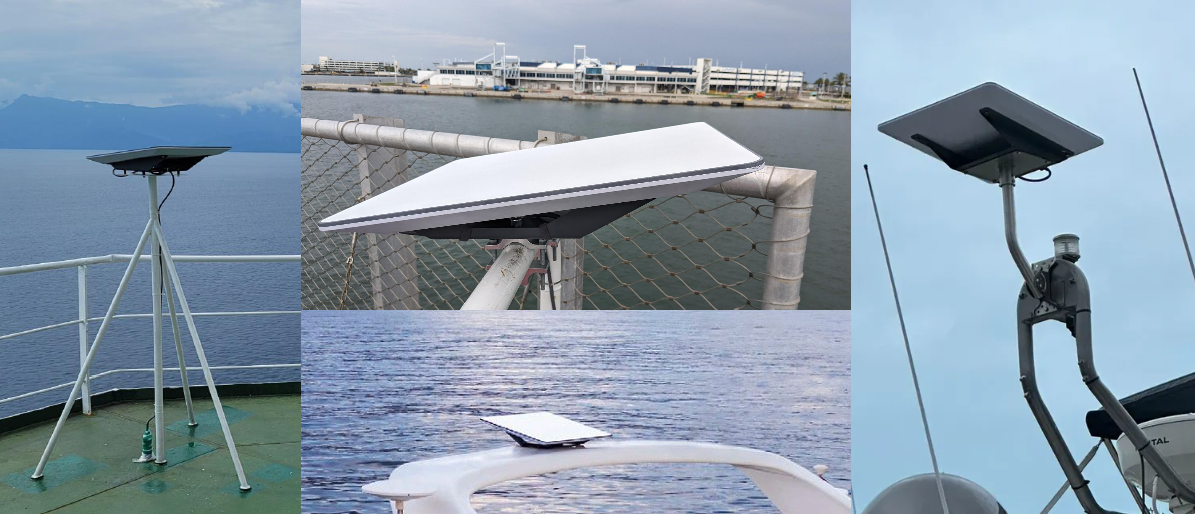
Maritime & Mobility applications are best served by the Flat High Performance Starlink (spec sheet here). For most applications, we recommend mounting using our Wedge Mount to install the dish at a slight angle. This encourages rain water to run off the dish to prevent accumulation of droplets which would impact performance by blocking the beams to/from the satellite. However, for higher-speed vehicles a flat (horizontal) installation is acceptable to minimize drag.
Be sure to use removable thread locker (for example Loctite 222) on all threaded fasteners, to prevent the faster from backing out due to vibration. Also placing silicone near the head (between head and mount, and mount and product) to seal out any water. Fastener thread is 1/4-20. Recommended torque is max 7.5 ft-lbs.
Starlink Wedge Mount Details
If you plan to use the Starlink Wedge Mount, please keep the following in mind:
For detailed instructions, reference the Wedge Mount Install Guide.

Other mounting solutions
Accessories for each Starlink Kit can be found on the Kit-specific Specifications under “Mounts & Accessories”. We offer various alternative mounts and cable lengths you can purchase to best meet your needs.
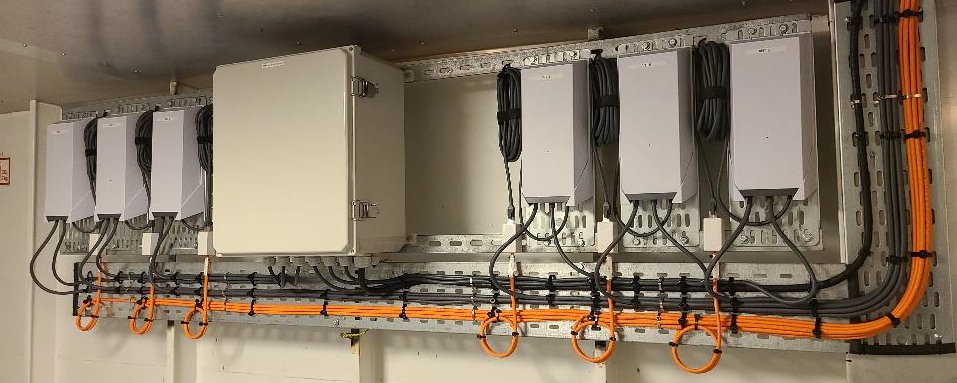
Mount the power supply using the supplied mount. The power supply is rated IP56. However, to prevent water pooling around the connectors, the power supply should be mounted with the connectors at the bottom or the side of the enclosure.
The power supply dissipates approximately 20W of heat and should be mounted in a well-ventilated environment. If it is enclosed be sure to provide a mechanism for the heat to escape. If the power supply over heats it will shut off resulting in a loss of internet connection.
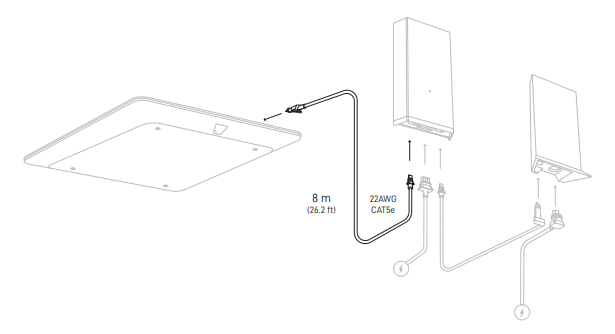
Connect the Starlink dish to power supply with the provided Starlink Cable.
Once the cable is inserted into the dish, lock it into place by pushing UP on the clip until you hear a "click".
The Flat High Performance kit includes an 8 meter cable. If 8 meters is not long enough for your installation, you can purchase a 25m cable in the Starlink Shop. Due to power requirements, the cable from the power supply to the dish can not be extended beyond 25m.
Use the power cable to connect the power supply and the router (if in use) to a power source supplying AC voltage.
It is recommended to power the Starlink and any downstream router from a power source protected by an Uninterruptable Power Supply (UPS) to protect the Starlink from power spikes and surges and to provide continuous power to the Starlink through minor dips (brownouts) or short power outages.
OPTION 1: Use the included Starlink WiFi router.
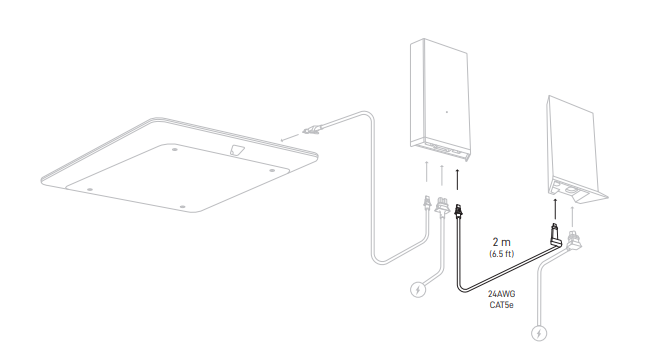
OPTION 2: Connect directly to a device or third-party router
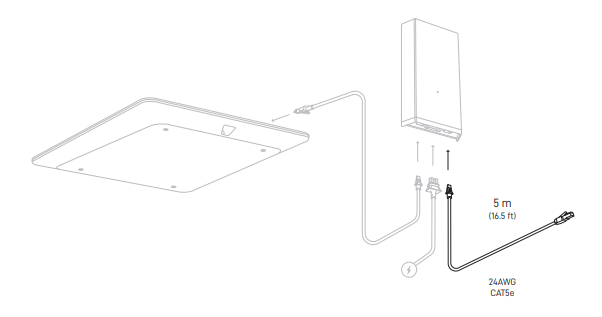
Can't find what you're looking for? Contact Support.
Read First: Key Considerations for a Successful Install
Prepare for Install
Find an Unobstructed Location
Review Important Hardware Details
Ingress Protection (IP) Rating
Sealing Cable Connections
Cable Details
Mount Starlink
Mount the Power Supply
Connect Starlink
Connect the Power
Connect the Network
Installing Multiple Starlinks
Connection Monitoring
Maintenance and Troubleshooting
Get Support
Additional Resources